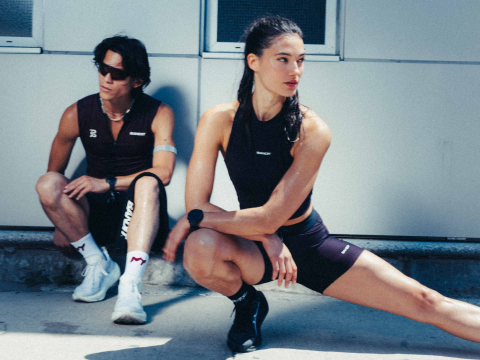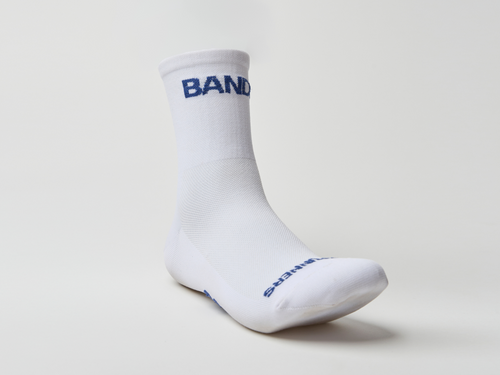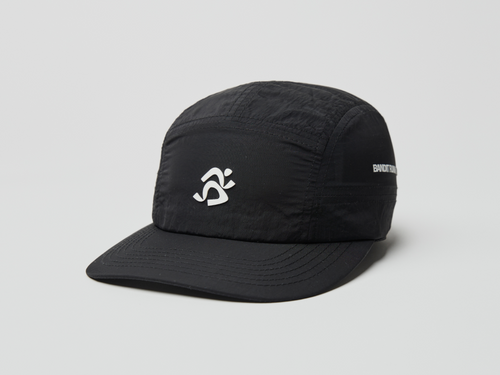According to Quentin Mui, when it comes to street photography, you can either be a camper or a hunter. A camper chooses their location in advance, waiting for the right subject to enter the frame. A hunter roams, searching for scenes and subjects, never staying in one place for too long.
In Manhattan’s Chinatown, Mui switches between camper and hunter, having spent enough time in the neighborhood to know it intimately. He’s become known for capturing images that tell stories about the everyday people who live, work, and pass through the community and posts them to his Instagram account, which has more than 20,000 followers.
“I am of Chinese descent and it’s sort of my way of getting in touch with home,” Mui says. “I like going to Chinatown to kind of just immerse myself in the people, the culture, the food. I like the stories that I can portray and elevate from there.”
Hong Kong to New York
Mui was born in Hong Kong, but when he was 2, shortly after the United Kingdom signed a treaty to hand over control of the city to China after more than a century of British rule, his parents moved his family to Australia to escape an uncertain future. They settled in Wollongong, a beachside town two hours south of Sydney.
He described himself as being the “token Asian” among his group of childhood friends, always carrying a camera with him to take photos of their exploits. After college, he spent a few years in Sydney before moving to London for a job working in marketing for a media agency. During his travels, he started taking photos with a Nikon D90, but found it bulky to carry around, so he switched to a smartphone—a move he now regrets looking back at the quality.
When Mui’s job took him to New York City in 2017, he lived in Downtown Brooklyn, one subway stop away from Chinatown’s Canal Street on the Q train. He decided to get serious about photography again, picking up a Fujifilm X-T3 to first take photos of cityscapes and landmarks before switching to street photography. He went through the “YouTube Academy” to learn techniques, but he began to understand the nuances of what made a photo work by posting his work on Instagram and eliciting feedback.
“I used social media as a sort of gut check,” Mui says. “But above all else, if I was happy with how something looked at the end of the day before sharing, that would be it. My approach is often trial and error, throwing something against the wall and seeing if it sticks.”
Awareness through Art
Mui currently lives in Manhattan’s Financial District, about a 10-minute walk to Chinatown. He’s seen the neighborhood go through changes in the last five years due to gentrification, the Covid-19 pandemic, and a flurry of hate crimes.
He recalls one of the victims by name: Christina Lee, a 35-year-old woman who was followed into her building on Chrystie Street and stabbed to death. He also points out another recent issue in the community: the construction of a 300-foot tall “mega jail” near Columbus Park that would make it the tallest detention center in the world.
“I can’t do much from an activist standpoint because that will put my visa in jeopardy,” Mui says. “I can’t sit down and protest somewhere and get arrested. But I can sort of shout about it on social media. I can raise awareness and share stories through art.”
Merging Passions
A little over three years ago, when Mui was between jobs and having trouble finding a position, a friend made a bet with him that he’d quickly land somewhere new, and if that happened, he’d have run the New York City Marathon. Sure enough, Mui found a new marketing job shortly after and did the 9+1 program to qualify. He ran a 3:35:28 in 2021 and is hoping to run a 3:15 this fall.
He now wants to combine his passion for photography with his passion for running and New York City’s running community. He’s been shooting runners in Old Man Run Club, the crew he trains with, and hopes to shoot more running events. He recently got to shoot the “Women Take the Bridge” race in Brooklyn.
“I would like to try my hand at sports photography,” Mui says. “My focus has been on a lot of darker scenes and night photography. I just volunteered to shoot The Midnight Half.”
But his biggest concern is making sure he doesn’t work on projects that make him fall out of love with photography. He’s having fun and experimenting, including creating a series of NFT's. He’s bought a few from other photographers and playfully describes it like holding onto Pokémon cards.
“The money aspect of things were always very secondary,” Mui says. “For me, it was always just about exploring New York City because I’m still pretty new to it all and I’m still in love. I still get starstruck by this city.”
Chinatown NYC in His Own Words

Taking out the Trash
This is outside a restaurant on Mott Street. There’s a set of stairs that leads underneath the restaurant to the kitchen. I knew that around 8 p.m. there’d be some activity there—they’ll start closing up and taking the trash out. And I had envisioned a short like that where someone comes out of the staircase to throw out the trash. That was my process, but the whole point of taking this shot was to hero the business. These guys have been put through the ringer during Covid. I think the expression that I caught helps convey the story of making it through with hard work and resilience.

Forget me not!
"This one reminded me of my family. It’s also on Mott Street, which I frequent a lot. I was walking past and I saw this lady sitting there with a mask on, looking a little sad almost. She was all in red, which was quite striking. This couple came by to look at her hats and it created this perfect frame. And I think at that point in time, she had noticed me and kept looking right at me and I took the shot. She reminded me of my grandma."

It’s only through the shadows that one gets to know the light
"This street shot was taken on the Manhattan Bridge looking southbound on East Broadway. There’s a specific time of year where the sun kind of sets in a way that casts these kind of elongated shadows. I just always wanted to take a shot like this that kind of heroes this part of town. You get how Chinatown is in the immediate frame, but then in the background, you’ve got tall high rises—gentrification. It’s like the yin and the yang, this sort of transition that New York City’s going through."

It's all fun and games
"This one’s in Columbus Park taken in the midafternoon. It’s known for masses of the older generation kind of congregating together, playing games, doing a bit of gambling, even though I think it’s supposed to be hush-hush. They’re always very shy, but I’ve always found the older generation to be very interesting. They’re the ones who were the first to move and start new families here. And now they’re enjoying the fruits of their labor and the company of their friends. It’s just a bunch of oldies getting together and having a good time with their mates."

Picking out the good ones
"So we all love Asian barbecue. But to the Western culture, it can seem out of left field because they’re not used to seeing a whole animal sort of just hung there. I took this photo because it was clearly two Westerners looking at Chinese barbecue with the older gentleman explaining to the younger one what it’s all about. It’s a sign that Chinese culture is becoming more widely and openly accepted."













